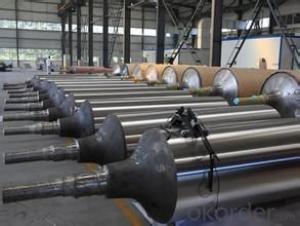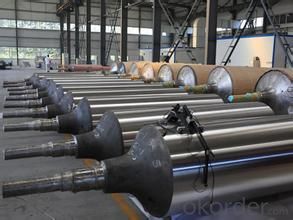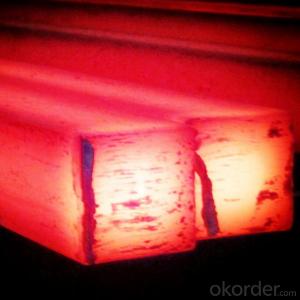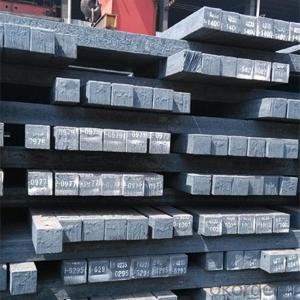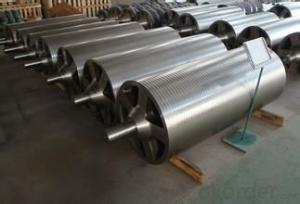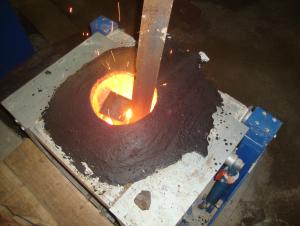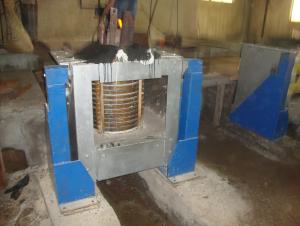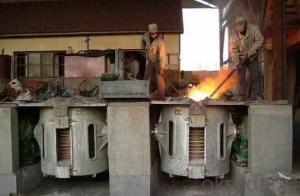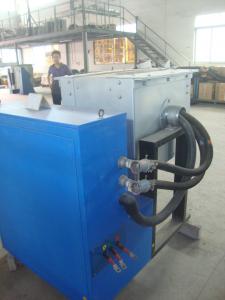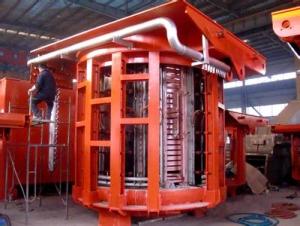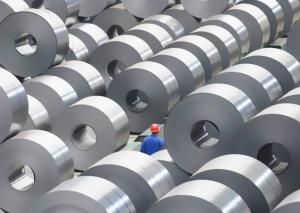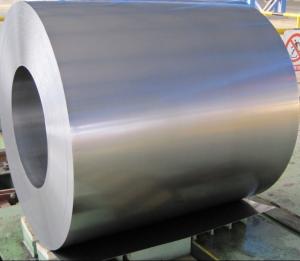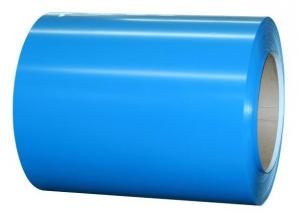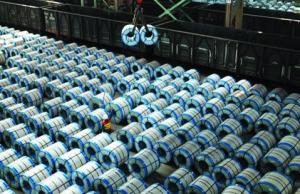Induction Heating Furnace for steel billet forging, hot rolled
- Loading Port:
- Tianjin
- Payment Terms:
- TT OR LC
- Min Order Qty:
- 1000 PCS
- Supply Capability:
- 10000 PCS/month
OKorder Service Pledge
OKorder Financial Service
You Might Also Like
Quick Details
| Condition: | New | Type: | Induction Furnace | Usage: | Heat Treatment Furnace |
| Place of Origin: | Brand Name: | Model Number: | GW-1000 | ||
| Voltage: | 660V | Power(W): | 1000KW | Dimension(L*W*H): | customize |
| Weight: | customize | Certification: | 9001 | Warranty: | one year |
| After-sales Service Provided: | Engineers available to service machinery overseas |
Packaging & Delivery
| Packaging Detail: | standard export wooden case |
| Delivery Detail: | have stock 4 days,in production 8 days |
Specifications
1. the heating temperature is high, and is a contact heating
2.high heating efficiency, energy saving
3.heating speed
Induction heating furnace for steel billet forging, hot rolled
1. The heating speed, less oxidation decarburization
Due to the principle of electromagnetic induction heating, the heat inside the workpiece itself, fast heating, the heating way so few oxidation, high heating efficiency, process repeatability.
2. High degree of automation, which can realize full automatic operation
Selects the automatic feeding and automatic discharge sorting device, deserve to go up in our company is special control software, but to achieve automatic operation.
3. Uniform heating, high precision of temperature
Easy implementation plan heat evenly, core temperature difference is small.Application of temperature control system can realize accurate control of temperature.
4. Simple induction furnace replaced
According to different machining dimensions, the configuration of different specifications of the induction furnace design with water, electrical fast conversion connector, furnace replacement is simple, fast and convenient.
5. Low energy, no pollution
Induction heating compared with other heating mode, high heating efficiency, low energy consumption, no pollution;All the indexes can meet user requirements.Heating conditions, by have heated to 1250 °C tons of power consumption is less than 380 degrees.Have lower costs than use natural gas or coal to heat, and can improve working conditions for workers.
Energy-saving GW medium frequency heating furnace
Summary: diathermy is refers to the metal thermal deformation or as a whole through heating before heat treatment.
Purpose: GW series heating furnace can be according to the different material workpiece geometry and heating process require the use of 300-8000 hz power for heating.Mainly used in bar, round steel, square steel, steel heating, temperature, quenching blanking, on-line heating, local heating, metal materials in forging (such as connecting rod, gears, half shaft bearing forging), extrusion, hot rolling, shear heating, as well as metal materials of the whole tempering, annealing, tempering, etc.
- Q: How is steel tubing used in the manufacturing of automobile exhaust systems?
- Steel tubing is used in the manufacturing of automobile exhaust systems because it offers strength, durability, and resistance to high temperatures and corrosion. The tubing is shaped and welded to form the necessary paths for exhaust gases to flow from the engine to the tailpipe, ensuring efficient and safe removal of harmful emissions.
- Q: How is steel wire galvanized for fencing applications?
- Steel wire is galvanized for fencing applications by immersing it in a bath of molten zinc. This process, known as hot-dip galvanizing, forms a protective zinc coating on the wire's surface, which helps prevent corrosion and extends its lifespan.
- Q: How does steel sheet metal fabrication work?
- Steel sheet metal fabrication is the process of transforming flat steel sheets into various shapes and structures through cutting, forming, and assembling. It typically involves steps such as cutting the sheet into the desired size, shaping it through bending or rolling, joining multiple pieces through welding or fastening, and adding finishing touches like painting or coating. This precise and intricate process allows for the creation of a wide range of products, from simple brackets to complex machinery components, by utilizing the versatility and strength of steel.
- Q: How are steel gratings used in the construction of staircases and platforms?
- Steel gratings are commonly used in the construction of staircases and platforms to provide a sturdy and safe walking surface. They are often installed as treads on staircases, ensuring slip resistance and allowing for the drainage of water or other liquids. Additionally, steel gratings are also used as flooring on platforms, providing a durable surface that can withstand heavy loads and prevent accidents caused by slipping or tripping. Overall, steel gratings play a crucial role in enhancing the structural integrity and safety of staircases and platforms in construction projects.
- Q: How are steel products used in the manufacturing of electrical equipment?
- Steel products are commonly used in the manufacturing of electrical equipment for various purposes. They are used to create sturdy and reliable enclosures or casings, providing protection for sensitive components inside the equipment. Steel is also used to manufacture structural components, such as brackets and frames, which provide support and stability to the electrical equipment. Additionally, steel is often utilized in manufacturing electrical connectors, terminals, and conductive parts due to its high conductivity and durability. Overall, steel products play a crucial role in enhancing the performance, durability, and safety of electrical equipment.
- Q: What are the environmental impacts of steel production and the use of steel products?
- The environmental impacts of steel production and the use of steel products are significant. Steel production is a highly energy-intensive process, leading to high levels of greenhouse gas emissions, particularly carbon dioxide. The extraction of raw materials, such as iron ore and coal, for steel production also contributes to deforestation, habitat destruction, and air and water pollution. Additionally, steel production generates large amounts of solid waste and toxic byproducts, which can contaminate soil and water sources. Furthermore, the use of steel products, while durable and recyclable, can contribute to resource depletion and waste accumulation if not properly managed. Overall, the steel industry's environmental impacts necessitate the adoption of sustainable practices and technologies to minimize pollution, reduce energy consumption, and promote circular economy principles.
- Q: How are steel forgings used in the production of power generation equipment?
- Steel forgings are used in the production of power generation equipment due to their exceptional strength, durability, and reliability. These forged components, such as turbine rotors, shafts, and casings, are able to withstand the extreme conditions and heavy loads associated with power generation. The forging process ensures a uniform grain structure, eliminating weak points and improving the overall performance and longevity of the equipment. Additionally, steel forgings can be customized to meet specific design requirements, allowing for efficient and safe power generation operations.
- Q: How are steel products used in the telecommunications industry?
- Steel products are used in the telecommunications industry for various purposes such as building transmission towers, constructing infrastructure for cellular networks, manufacturing support structures for antennas, and providing protection for underground cables and conduits.
- Q: How are steel sheets used in the manufacturing of industrial machinery?
- Steel sheets are commonly used in the manufacturing of industrial machinery as they provide strength, durability, and versatility. These sheets are used for constructing machine frames, enclosures, and supports, as well as for creating various components such as gears, shafts, and brackets. The ability to mold and shape steel sheets allows manufacturers to customize machinery according to specific requirements, ensuring optimal performance and reliability.
- Q: What are the different types of steel forgings and castings available?
- There are several different types of steel forgings and castings available, including open die forgings, closed die forgings, rolled ring forgings, investment castings, sand castings, and shell mold castings. These different processes result in steel components with varying shapes, sizes, strengths, and surface finishes, allowing for a wide range of applications in industries such as automotive, aerospace, construction, and manufacturing.
Send your message to us
Induction Heating Furnace for steel billet forging, hot rolled
- Loading Port:
- Tianjin
- Payment Terms:
- TT OR LC
- Min Order Qty:
- 1000 PCS
- Supply Capability:
- 10000 PCS/month
OKorder Service Pledge
OKorder Financial Service
Similar products
Hot products
Hot Searches
Related keywords
